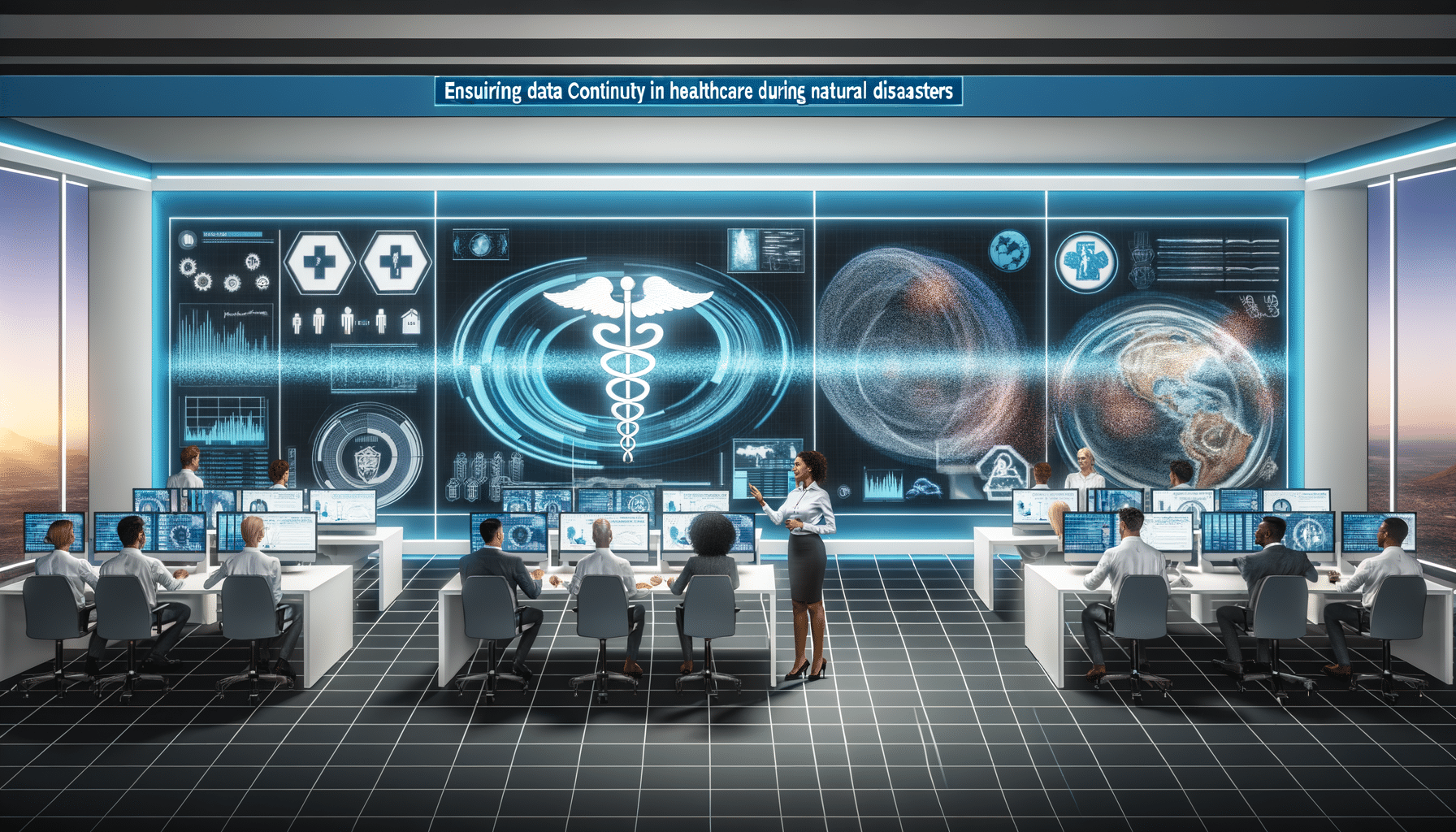Introduction
In the healthcare sector, where every piece of information can be as critical as a heartbeat, ensuring data continuity during natural disasters is not a choice, but a necessity. Over the years, I have seen the healthcare landscape become increasingly dependent on digital records. While technology offers unparalleled advantages, it also makes us vulnerable to disruptions, especially during natural disasters. The stakes are high, and the need to safeguard these records is paramount. Let me delve into how we can ensure data continuity in healthcare amidst the chaos of natural disasters.
The Gravity of Data Continuity in Healthcare
Having been in the tech industry for several years, I’ve realised one undeniable truth: data continuity is a lifeline for healthcare services. When natural disasters strike, maintaining the seamless flow of critical patient data is essential. Interruptions can lead to compromised care, increased response times, and even life-threatening delays. In such scenarios, the ability to access and manage data efficiently becomes a cornerstone of crisis management, making continuity planning an intrinsic part of healthcare operations.
Understanding Potential Disruptions
Before strategizing solutions, it is prudent to understand the nature of disruptions that natural disasters can cause in healthcare data systems:
- Infrastructure Damage: Physical damage to servers and network infrastructure is often the first consequence.
- Power Outages: Loss of electricity can halt operations, disabling electronic systems essential for healthcare.
- Data Corruption or Loss: Events such as flooding can damage hard drives, leading to potential data loss.
- Communication Barriers: Damaged communication lines can hinder coordination among emergency responders and healthcare providers.
Strategies to Ensure Data Continuity
Securing data continuity in healthcare during natural disasters involves a multifaceted approach. Drawing from my experience and the capabilities of platforms like RecordsKeeper.AI, here are some strategies:
1. Cloud-Based Solutions
Having robust, cloud-based data storage solutions ensures that no matter the scale of the disaster, healthcare data remains accessible. Implementing a hybrid model where critical information is duplicated in the cloud and on-site can significantly reduce the risk of data loss. Moreover, with blockchain integration, the integrity and authenticity of data are guaranteed, making it tamper-proof and reliable.
2. Automated Backups
Implementing automated backups is crucial. By setting up regular data backup schedules, organisations can ensure minimal data loss. Platforms like RecordsKeeper.AI facilitate this with ease, offering seamless backup and rapid data recovery options.
3. Secure Data Rooms
In cases where sensitive healthcare data needs sharing during emergencies, secure data rooms provide a controlled environment. With controlled access and real-time activity tracking, these rooms ensure data remains confidential and accessible only to authorized personnel.
4. Reliable Communication Systems
A disaster’s impact on communication lines is inevitable, but having a multi-channel approach (internet, satellite, radio) increases the chances of maintaining connectivity. Ensuring integration with healthcare data systems will enable continuous communication and coordination, a pivotal aspect of managing healthcare emergencies.
5. Rigorous Policy Management
Having robust policy management ensures adherence to data retention, security and deletion policies. Automating these processes helps institutions remain compliant with regulations such as HIPAA and GDPR, thereby safeguarding sensitive healthcare data legally and ethically.
Training and Preparedness
No strategy can be effective without proper training and preparedness. It’s vital for healthcare providers and associated staff to be well-versed with the technology they are relying on. Through regular disaster recovery drills and workshops, staff can remain adept at handling emergencies, ensuring that technology is an enabler, not a barrier, to healthcare delivery.
Conclusion
Ensuring data continuity in healthcare during natural disasters is more than a technical challenge—it’s a call to safeguard human lives. As a founder of RecordsKeeper.AI, I can attest to the power of innovative technologies that make this daunting task not only feasible but efficient. It’s about leveraging tools that automate, secure, and streamline data processes, allowing healthcare professionals to focus on saving lives. As we advance, I invite you to delve deeper, to prepare, and to prioritize data continuity because in the face of unpredictability, our resilience lies in our readiness. For more insights, stay connected with me as we navigate this critical intersection of healthcare and technology together.








